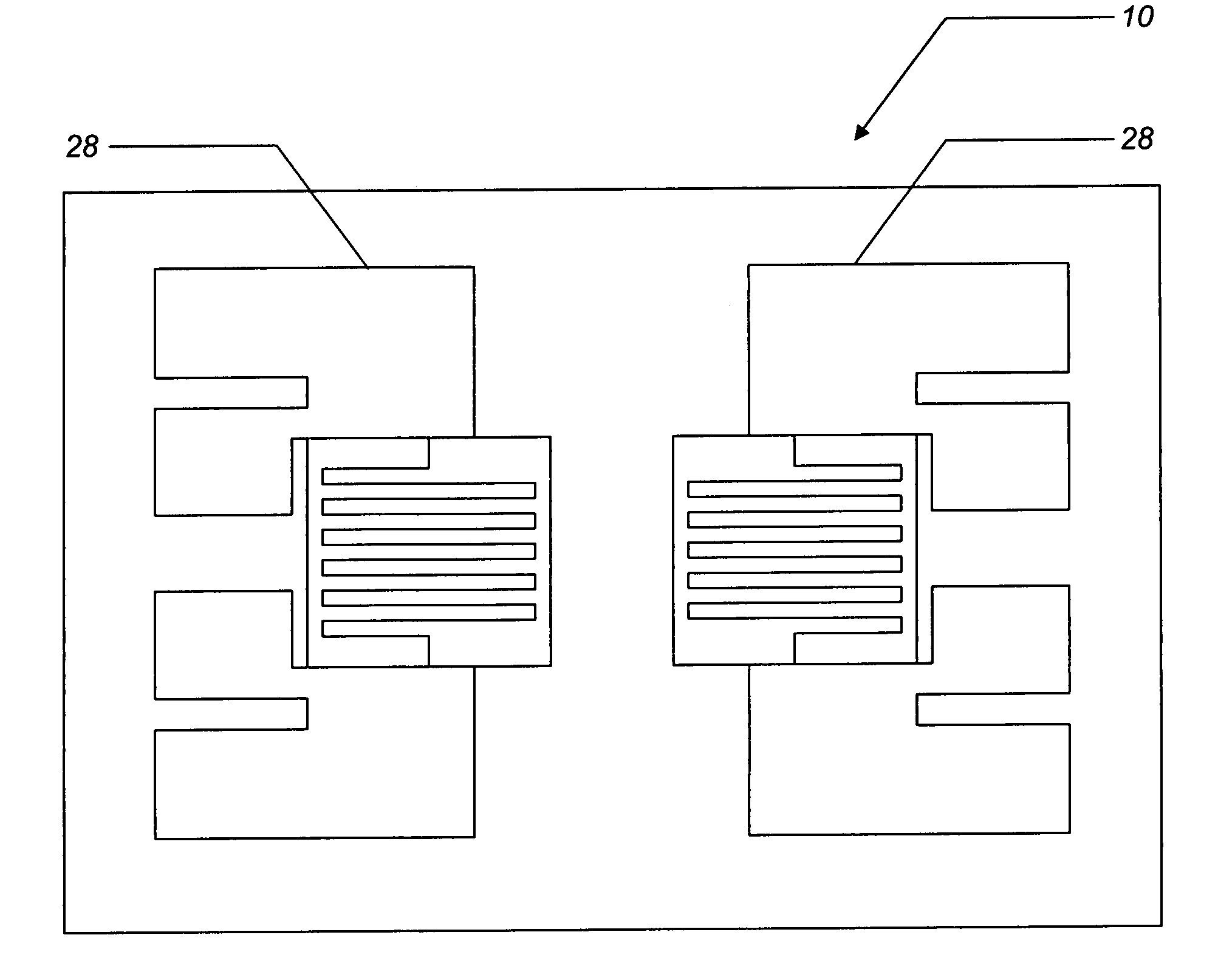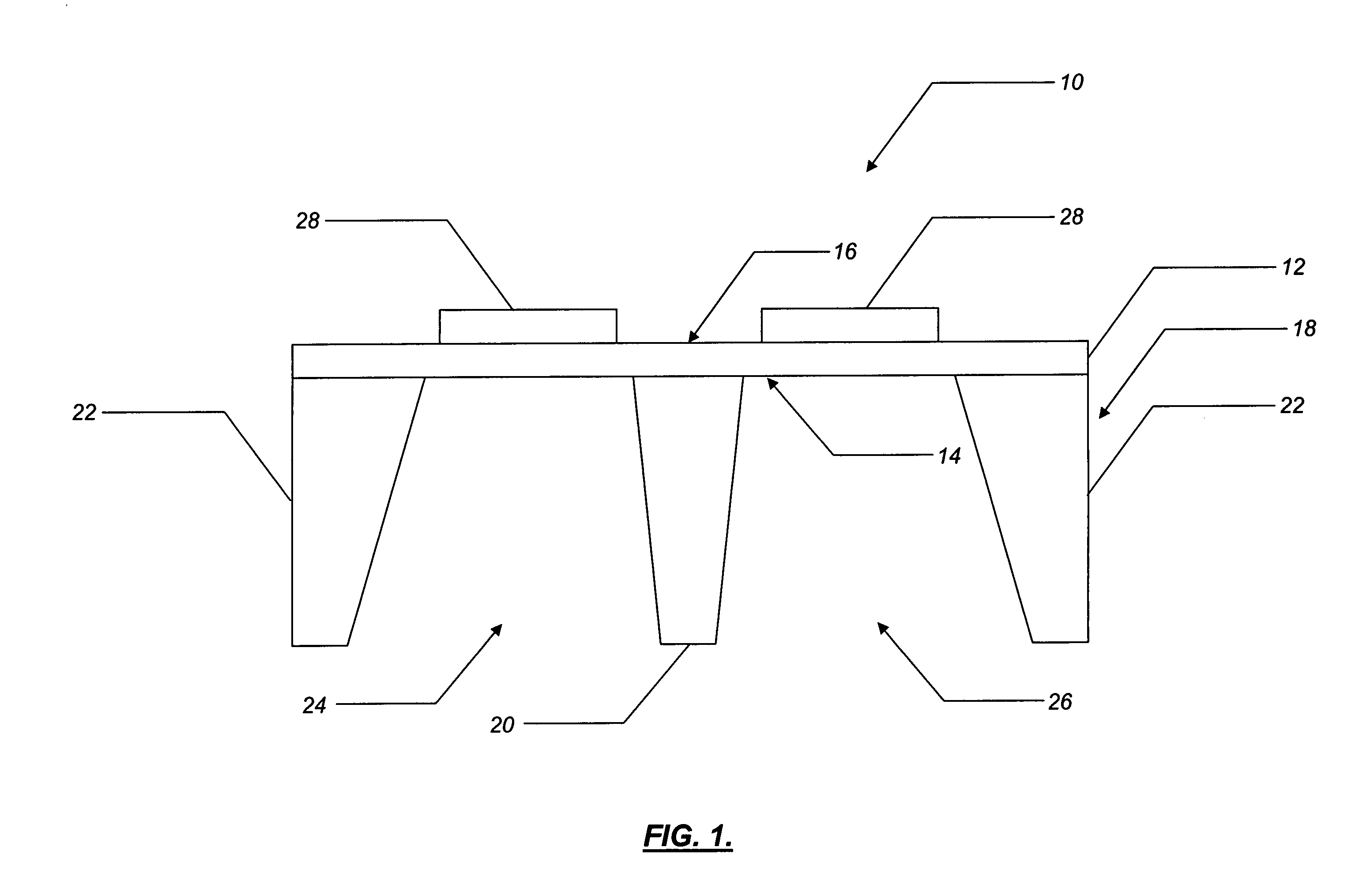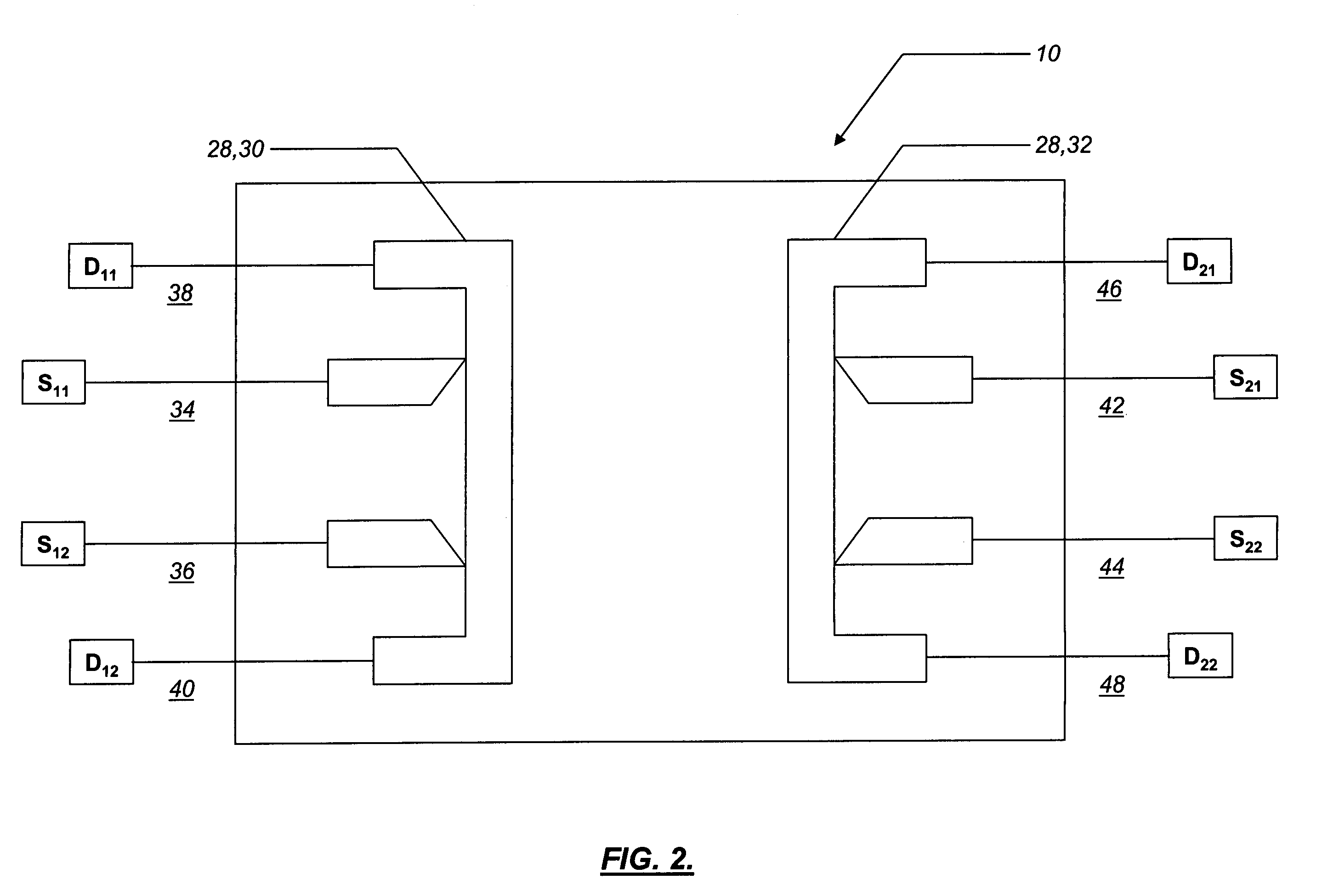Nano-calorimeter device and associated methods of fabrication and use
a nano-calorimeter and calorimeter technology, applied in the field of nano-calorimeter devices, can solve the problems of insufficient measurement and characterization of thermodynamic and other physical properties of bulk materials, insufficient temperature control, and inability to meet the needs of the bulk material, so as to improve the thermal conductivity, reduce the heat capacity and thermal conductivity, and improve the effect of thermal conductivity
- Summary
- Abstract
- Description
- Claims
- Application Information
AI Technical Summary
Benefits of technology
Problems solved by technology
Method used
Image
Examples
Embodiment Construction
[0025]Referring to FIG. 1, in one embodiment, the nano-calorimeter device of the present invention includes one or more twin-cell differential sensors 10, each of the twin-cell differential sensors 10 comprising a chip transducer that is operable for measuring heat flow. Each of the twin-cell differential sensors 10 includes a membrane 12 that has a relatively low heat capacity and thermal conductivity, such as a free-standing thin film silicon nitride (SiNx) membrane, a polymeric membrane, or the like. Si3Nx or the like may also be used. The membrane 12 has a first surface 14 and a second surface 16, and a thickness of between about 20 nm and about 5000 nm, preferably between about 30 nm and about 100 nm. The membrane 12 has a width of between about 100 nm and about 10 mm, preferably about 2 mm, and a length of between about 100 nm and about 10 mm, preferably about 5 mm. Optionally, a thermally-insulating dielectric layer 90 (FIG. 8) (SiO2, air, etc.) is disposed adjacent to and in...
PUM
| Property | Measurement | Unit |
|---|---|---|
| thickness | aaaaa | aaaaa |
| thickness | aaaaa | aaaaa |
| thickness | aaaaa | aaaaa |
Abstract
Description
Claims
Application Information
 Login to View More
Login to View More - R&D
- Intellectual Property
- Life Sciences
- Materials
- Tech Scout
- Unparalleled Data Quality
- Higher Quality Content
- 60% Fewer Hallucinations
Browse by: Latest US Patents, China's latest patents, Technical Efficacy Thesaurus, Application Domain, Technology Topic, Popular Technical Reports.
© 2025 PatSnap. All rights reserved.Legal|Privacy policy|Modern Slavery Act Transparency Statement|Sitemap|About US| Contact US: help@patsnap.com



